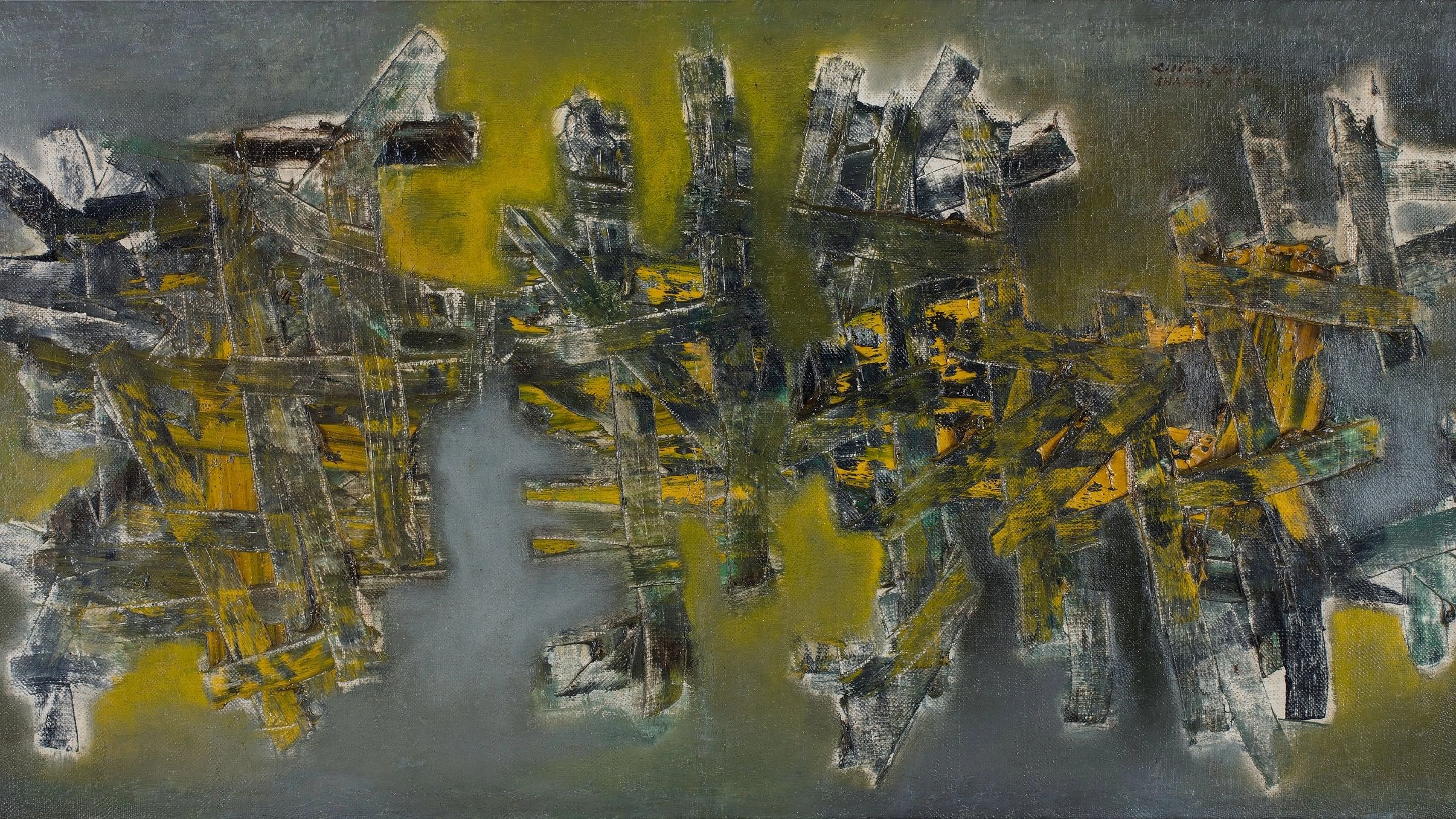
His is a career spanning six decades but what is immeasurable is his contribution to Indian modernism. Yet, India’s first major abstractionist Shanti Dave is startlingly simple and unassuming even in the light of his colossal repertoire of artworks that range from figuration to abstraction.
The use of script infuses a reverberating energy into his works in which colours cavort. “The genesis of the script that you see in my paintings lies in my experience as a signboard artist. I was a signboard painter in Ahmedabad, and my interest in calligraphy was born then. I have been fascinated with ‘script’ for the longest time. What is language? What is its power? I’m trying to understand that even now,” muses Dave as DAG brings his first-ever retrospective from New Delhi to Mumbai. The exhibition will subsequently travel to foreign shores.
There have been many firsts in his gleaming career: from the skilful employing of script in his artworks to bringing in the encaustic technique: A wealth of worlds traversing through enamel, adhesive and sand on plywood, oil paints on masonite board, and encaustic on canvas in earthy colours. Why the fascination with script? “A beautiful, calligraphic alphabet is a visual expression and that could be a reason why artists engage with it,” explains Dave. “Seen in isolation, it is pretty. That is all. By itself, it does not have any meaning but when it starts partnering and pairing with other letters, one can find meaning. However, these are meanings created by man. So, in a way, akshara bhi bhram hain (script, too, is an illusion). Akshara is a mere illusion that contains neither earth nor sky; despite being an illusion, it is alive on its own strength.”
“From his early figurative works to his segueing into abstraction and his beeswax encaustics recounting human histories and our relationship with geographies, this exhibition offers a comprehensive overview of Shantibhai’s practice,” says Ashish Anand, CEO and MD, DAG. “His encaustic paintings often appear like sculptures in relief. The indecipherable scripts in his paintings appear to me like history having a conversation with itself.”
The knit of the encaustic technique to his paintings goes back to the early 1960s. There was a void that he experienced at that point in his life. “Somehow, despite receiving accolades, I felt I was not heading in the right direction in terms of my art. Then I saw Japanese encaustic work and was very impressed with it. I felt the urgent need to grow my art by working in that medium. The process was frustrating to learn; initially, I was doing everything wrong. Gradually, I started figuring out my mistakes and arriving at solutions, which made it special,” he confesses.
The artworks reflect Dave’s precious prowess with mediums and materials. His stark black-and-white graphic watercolours are on display in public space for the first time in the exhibition that explores the theory of sound and the aesthetics of bhava — emotion arising from form and colour — suffusing each creation through the adroit use of gravel, wax and sand. Dave’s interpretation of the Devanagari script places him at the peak of calligraphic modernism of the 1960s.
The exhibition, curated by Jesal Thacker, brings in a symphony — of Dave’s early figurative works shaped under the tutelage of N S Bendre and K G Subramanyan at the Faculty of Fine Arts, Baroda, as well as his beeswax and encaustic canvases, and layered watercolours. The retrospective — spanning his career from 1950 to 2014 — also weaves in his pivotal expressions as a printmaker and muralist. “The retrospective pays homage to an artist whose contribution to Indian modernism is phenomenal,” says Ashish. “This honour should have come to him much earlier as he continues to enjoy a legion of admirers. It will go a long way in informing a younger generation of collectors and art lovers who have not had the opportunity to see his work with the respect it truly deserves.”
“Searching for my identity through my art has been the biggest challenge of my life and career, right from the start,” says Dave. “Through my paintings, I have endeavoured to seek knowledge. When your art speaks from the soul, it resonates very powerfully. I have wanted to seek the truth through my art. I have wanted to pursue the truth of painting by painting. Today, I look back at my life as one that has been lived well. I started with nothing. I have achieved a lot in this lifetime.”
Deccan Herald is on WhatsApp Channels| Join now for Breaking News & Editor's Picks